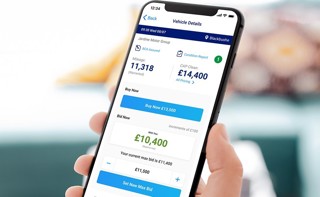Average retail used car prices on Auto Trader recorded the largest ever monthly price increase in September - increasing by 7.6% to £13,829.
It marks a sixth month of consecutive growth for used car prices on the online classified advertising platform and is based on pricing analysis of around 900,000 vehicles listings.
The September increase follows the previous YoY record of 6.1% recorded in August, prior to which the highest rate of growth was 5.8%, observed in July 2014.
Richard Walker, Auto Trader director of data and insight, said that despite COVID-19 and the reintroduction of lockdown restrictions in many parts of the UK, there has been no evidence of a negative impact on consumer demand for used cars.
Walker said: “Not only is demand continuing to surge among key segments, we’re also seeing new pockets of opportunity.
“Our latest research shows that the proportion of people on our marketplace looking to buy a car to avoid public transport is at its highest level (15%) since we began tracking it in July.
Auto Trader recorded a 27.5% year-on-year increase in visits in September to 63.3 million.
Earlier this week Cap HPI’s head of valuations, Derren Martin, said that the continued growth in used car values is “not sustainable in the long-term” - but may continue into 2021.
Speaking after the valuations specialist’s market data indicated a marginal 0.4% (£65) increase in values in its benchmark three-year, 60,000-miles market sample, Martin reiterated his opinion that the upward trajectory would falter.
ICE demand continues growth
For now, Auto Trader's data shows no signs of the market weakening.
In terms of fuel types, like-for-like prices on the platform continue to show strong growth for internal combustion engine (ICE) cars, indicating buyers are sticking to the types of vehicle they are familiar with.
Last month, as a result of very high demand (21.5%) and falling supply (down 3.6%), the average price (£12,480) of a used petrol car increased 8% YoY, the 10th consecutive month of growth and at the highest rate since June 2018.
Diesel recorded a similarly positive performance.
However, while demand was up by a slightly more conservative 11.4% YoY, levels of supply dropped a significant 19.3%. The large margin contributed to a 7.8% YoY price increase (£14,710), the highest rate of growth for second-hand diesel cars ever recorded on the Retail Price Index, and by some margin.
Mirroring the wider market, the previous highest rate of growth was 6% YoY, recorded last month, prior to which the highest was 4.9%, observed in July 2014.
In contrast to their ICE counterparts, the levels of supply and demand for low emission vehicles are more balanced, with demand (54.8%) for alternatively fuelled vehicles (AFV) in September marginally outperforming supply (52.3%).
Last month the average sticker price of an AFV was £22,795, marking a 1.2% YoY contraction.
With an average sticker price of £26,801 in September, pure electric vehicles (EV) recorded a fall of -4.1% and nine months of consecutive decline. However, the rate of contraction has eased (from -5.2% in August) as a result of growing demand, increasing from 97.1% in August to 98.3% in September. EV supply has remained stable at 104%.
SUVs remains most in demand
In September like-for-like prices continued to increase across all body types, with hatchbacks (£9,107) and MPVs (£9,663) recording the highest rate of growth, up 12.2% and 10.6% respectively.
In terms of demand, SUVs continue to experience the highest levels of growth, recording a YoY increase of 27.7%, whilst supply fell -10.8%.
The average sticker price of an SUV was £19,298 last month, marking a like-for-like increase of 4% on September 2019.
Strong demand for older used car stock
Last month every age band recorded growth in average prices. Demand was highest among older used cars, with those aged 10-15 years increasing 13.3% YoY against a -15.7% fall in supply, resulting in the highest rate of growth at 15.3% (£4,316).
In contrast, vehicles aged up to one year were the only price band to record a negative YoY change in demand, falling sharply from -0.7% in August to -9.9% in September. As a result, prices grew 4.7% (£18,574) which was the lowest rate of growth among price bands.
Both premium and volume brands saw average prices grow in September, increasing 3.9% (£20,710) and 11.5% (£9,065) respectively. Whilst demand outstripped supply in both segments, premium brands continue to show stronger performance compared to volume brands, increasing 18.9% versus 15.5%.
Retailer pricing behaviour
Walker said that during the lockdown period the number of retailers making price changes and the value of price adjustments on Auto Trader was significantly lower than normal trading conditions.
More retailers are now making price changes and by larger amounts, however they remain below pre-COVID levels.
In September, the average number of retailers making daily price changes was 2,164; 13% fewer than in September 2019.
The average amount being changed on a daily basis was £271, which was a 17% decline on the same time last year.
Walker added: “Used car prices offer an accurate barometer of market health.
“As we enter Q4, it’s reassuring that whilst some commentators predicted used car prices would be in steep decline by September, they’re not only stable, but are growing.
“And although supply constraints are continuing to work their way through, with such strong demand in the market we don’t anticipate any significant reversal in this trend over the coming weeks.”





















Login to comment
Comments
No comments have been made yet.